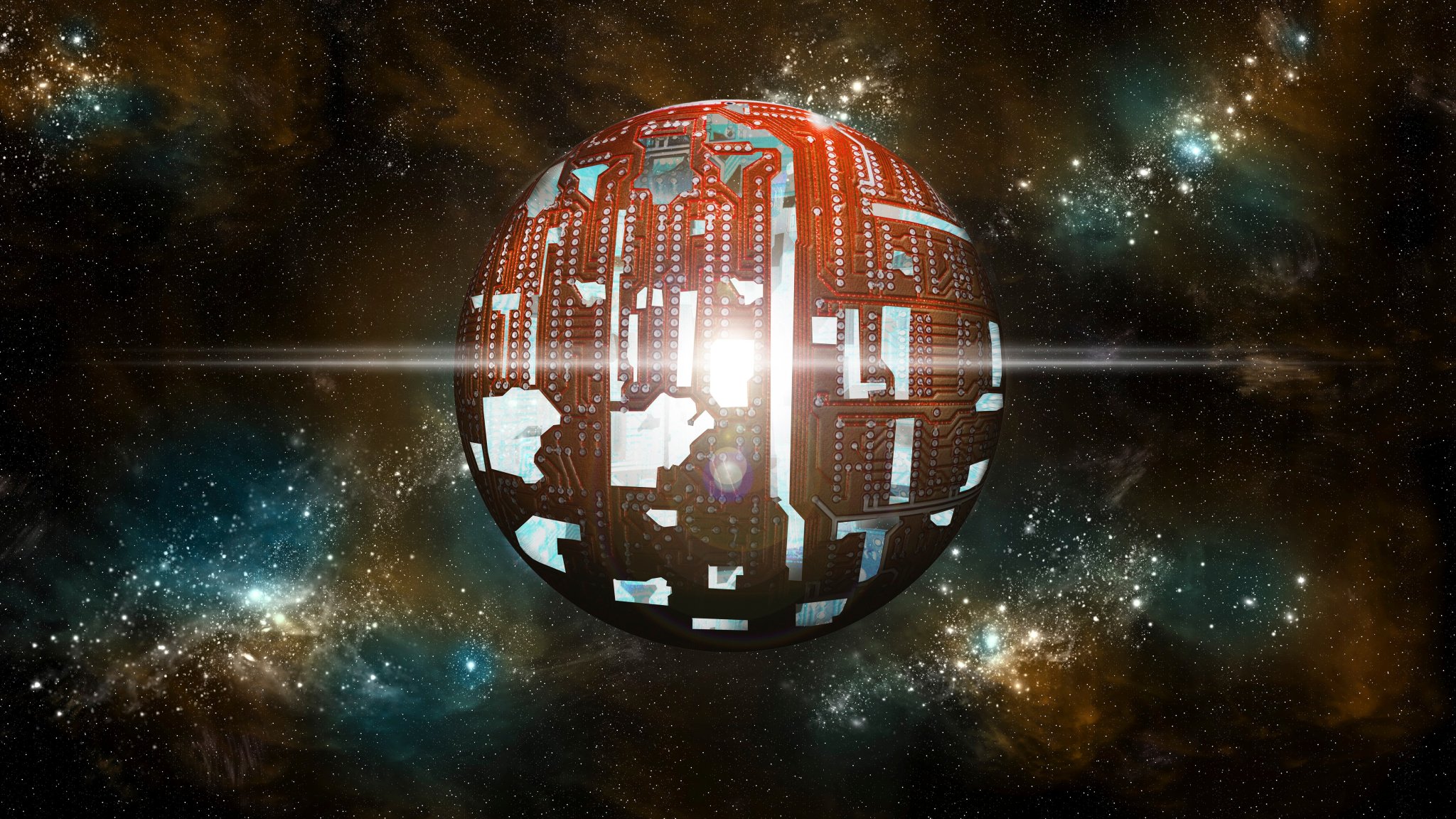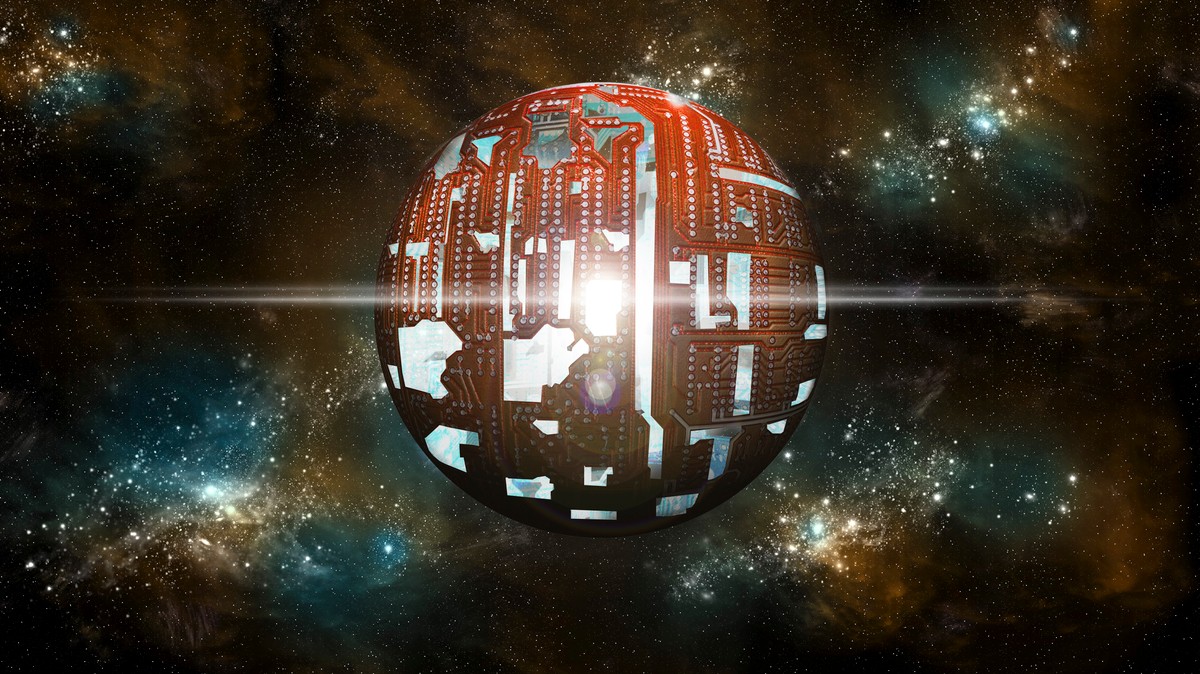[ad_1]

Scientists have proposed a new way to search for alien life through the lens of computation, which is described as “a fundamental measure of living systems” in a new study.
The research proposes looking for extraterrestrial life in so-called “computational zones” that could encompass a much wider range of habitats than traditional “habitable zones,” which are areas where liquid water might exist on a planetary surface in similar conditions to those found on Earth when the earliest forms of life emerged.
Computational zones, in contrast, are areas in which information can be processed, and could include any environment with three principal characteristics—capacity, energy, and instantiation (or substrate)—which could include overlooked substellar objects, such as brown dwarfs, the subsurface oceans of ice moons like Europa, or massive artificial structures, such as Dyson spheres.
Earth is the only world we know of that hosts life, leaving us with a rather limited sample to work with on the important question of whether we are alone in the universe. For this reason, it makes sense for scientists searching for life to focus their efforts on worlds that are similar to our own, and to especially prioritize the presence of surface liquid water, given how important this key ingredient has been to life on Earth.
That said, life may arise in many unexpected places that could be well beyond the limits of our imaginations. This problem inspired Caleb Scharf, a senior scientist for astrobiology at NASA’s Ames Research Center, and Olaf Witkowski, an expert on artificial intelligence (AI) and director of Cross Labs in Tokyo, Japan, to think of new ways to expand the scope of our search for aliens.
Now, the pair have unveiled a strategy to look for life that is built on the idea of computation, which the researchers define as “a set of physical processes that act on information represented by states of matter” and that “encompasses biological systems, digital systems, and other constructs,” according to a study recently published on the preprint server arxiv.
“One key piece of the computational zone idea is that it’s this very natural way to merge all the factors we look for in searching for life into one neat package—if you look for where computation can happen you naturally look at environmental conditions, energy, and what things are built out of,” Scharf said in an email. “It’s very agnostic though” in that “it doesn’t presume much about what life will be like except it must process information.”
“For example, this makes the interiors of icy moons like Europa or Enceladus just as important as the surface of a rocky planet, and puts these places on much more equal footing,” he continued. “Computational zones also give a new way to think about the outward signatures of life—if information processing is the core feature, what might that do to the world around it? And that creates a very natural bridge to questions of technology (or what we call technology) or how life might expand and ‘outsource’ its needs.”
The idea of computational zones emerged over the course of years as Scharf and Witkowski collaborated with each other on projects, while also delving into their own unique fields of astrobiology and AI research. Like many researchers who work in these fields, Scharf and Witkowski hoped to both develop a more unbiased method of evaluating the cosmos for the presence of life that didn’t depend so much on parameters linked to Earth.
“We may be introducing a lot of Earth biases when trying to project our knowledge onto other systems distant from Earth,” Witkowski told Motherboard in an email. “We essentially make a lot of assumptions about the nature of life, its necessary ingredients, and its characteristic signatures that may be detected when we point our equipment in its general direction.”
“One way to escape this limitation is to consider universal characteristics of life: what are possible or likely invariants of living systems which evolve anywhere in our universe?” he continued. “When one looks at life through the lens of information, one may see patterns and properties that are present regardless of the environment or substrate in which the living systems evolve. They all perform a certain type of computation, which we want to ultimately be able to detect. This may cast a larger and more adequate net over the systems which may contain life.”
The “Bingo moment,” as Scharf described it, was the team’s realization that fundamental physical rules about the limits of energy required for computation should be applicable to both biological and digital information processes.
“This paper is kind of the opening salvo on expressing this idea and showing how it might be applied to get us all the way to real-world measurements and strategies for looking for life *that doesn’t make too many assumptions about how that life is built*—it could be biological, digital, or something else,” Scharf explained.
“In this sense computational zones offer a less-contentious way to think more out of the box without going full ‘Borg’ in our hypothetical extrapolations!” he noted.
The new study, which has been submitted for publication in The Astrobiology Journal, runs with this idea by outlining the three major components of computation in the context of a search for life. Capacity describes the number of available states for carrying information, which includes factors such as the chemical ingredients available for computation. Energy refers to power sources that can support computation, such as sunlight or hydrothermal vents. Last, instantiation refers to the platform or substrate upon which the computation takes place.
This fresh perspective on one of humanity’s oldest questions could expose hidden opportunities to look for life beyond the conventional habitable zones where liquid water might flow. To that end, the team plans to continue developing the concept so that it can inform and expand the search for other beings in the universe, whether they are biological, artificial, or something else entirely.
“We’re starting to think about ways to accurately describe the computational hierarchy of life’s processes,” Scharf said. “Should metabolism be classified as computational or is it just a support process for computation? How does computation differ between microbial life and complex life? Just how much computation does life carry out—we estimate some of this in the paper, but what’s the net total computation of Earth, for example? (and yes, it’s very Hitchhiker’s Guide to the Galaxy!)”
“By adding this additional lens of computation, we don’t mean to replace current tools, but rather extend their perspective on complex life that may be found in the universe,” added Witkowski. “Hopefully, this leads directly to some ways to better understand and find more strands of it. Maybe it also leads to ways of looking at Earth and our solar system too, and the computation that is available within it. We can imagine designing new models to determine promising areas in the universe worth looking at in priority for traces of life. This is a fascinating new tool that we’re looking forward to developing further.”
[ad_2]
Source link
